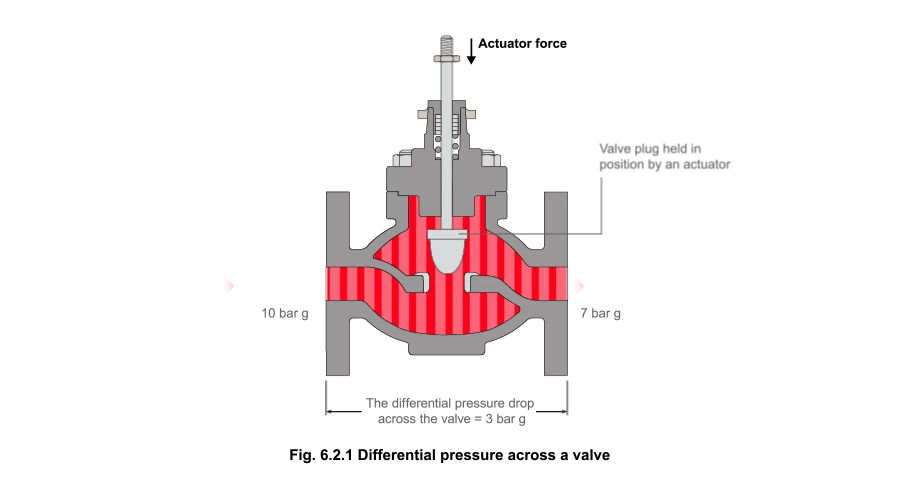Control Hardware Electric-Pneumatic Actuation

Contents
Control Valve Capacity
Valves need to be measured on their capacity to pass fluid. To enable fair comparison, valves are sized on a capacity index or flow coefficient. This tutorial explains the different types of flow coefficient in use, how they are established, how they compare, and typical values for different sized valves.
A control valve must, as its name suggests, have a controlling influence on the process. Whilst details such as connection sizes and materials of construction are vitally important, they do not give any indication of the control exerted by the valve.
Control valves adjust processes by altering:
- Flowrate - For example, the amount of steam or water that enters the process equipment.
With a two-port valve for example, as the valve moves to the closed position, less steam flows, and less heat is added to the process.
With a three-port valve for example, as the valve plug moves to a new position, it diverts hot water away from the process.
And/or
- Differential pressure - This is defined as the difference between the pressure at the valve inlet and the pressure at the valve outlet (see Figure 6.2.1).
For any given valve orifice size, the greater the differential pressure the greater the flowrate, within certain limitations.
With saturated steam, the lower its pressure, the lower its temperature, and less heat transfer will occur in the heat exchanger.

The flow coefficient allows:
Because many different units of measurement are used around the world, a number of flow coefficients are available, and it is worthwhile understanding their definitions. Table 6.2.1 identifies and defines the most commonly encountered capacity indices.
Table 6.2.1
| Symbols and definitions used to identify and quantify flow through a control valve | |
| Kv | Flowrate in m³/h of water at a defined temperature, typically between 5 °C and 40 °C, that will create a pressure drop of one bar across a valve orifice. (Widely used in Europe) |
| Kvs | The actual or stated Kv value of a particular valve when fully open, constituting the valve flow coefficient, or capacity index. |
| Kvr | The Kvr is the flow coefficient required by the application. |
| Cv | The flowrate in gallons per minute of water at a defined temperature, typically between 40 °F and 100 °F that will create a pressure drop of one pound per square inch. (Widely used in the US, and certain other parts of the world). Care needs to be taken with this term, as both Cv Imperial and Cv US exist. |
| Whilst the basic definition is the same, the actual values are slightly different because of the difference between Imperial and US gallons. | |
| Av | Flowrate in m³/s of water that will create a pressure drop of one Pascal. |
For conversion:
Cv(Imperial) = Kv x 0.962 658
Cv (US) = Kv x 1.156 099
AV = 2.88 x 10-5 CV (Imperial)
The flow coefficient, KVS for a control valve is essential information, and is usually stated, along with its other data, on the manufacturer’s technical data sheets.
Control valve manufacturers will usually offer a number of trim sizes (combination of valve seat and valve plug) for a particular valve size. This may be to simplify the pipework by eliminating the need for reducers, or to reduce noise.
A typical range of KVS flow coefficients available for a selection of valves is shown in Table 6.2.2.
Table 6.2.2
Kvs values for a typical range of valves
| Sizes | DN15 | DN20 | DN25 | DN32 | DN40 | DN50 | DN65 | DN80 | DN100 |
| Kvs | 4 | 6.3 | 10 | 16 | 25 | 36 | 63 | 100 | 160 |
| 2.5 | 4 | 6.3 | 10 | 16 | 25 | 36 | 63 | 100 | |
| 1.6 | 2.5 | 4 | 6.3 | 10 | 16 | 25 | 36 | 63 | |
| 1 | 1.6 | 2.5 | 4 | 6.3 | 10 | 16 | 25 | 36 |
The relationship between flowrates, differential pressures, and the flow coefficients will vary depending upon the type of fluid flowing through the valve. These relationships are predictable and satisfied by equations, and are discussed in further detail in:
